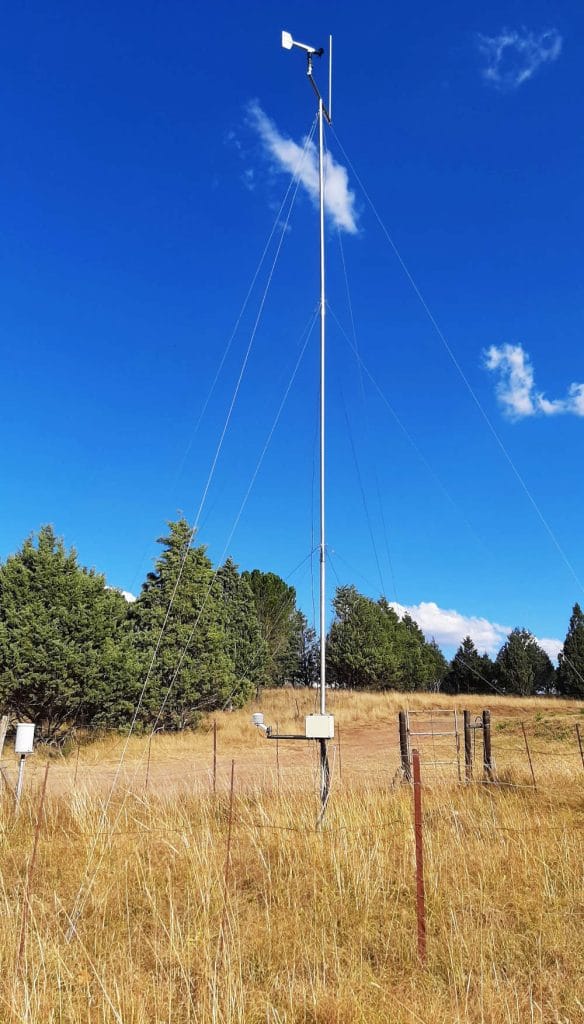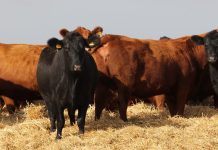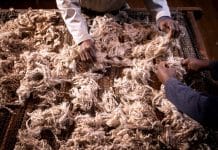Estimated reading time: 6 minutes
The name ‘Buffelsfontein’ is sometimes mentioned when people talk about extremely cold weather conditions, and some readers will correctly guess that we are referring to a farm in the Eastern Cape – a place known for some of the lowest recorded temperatures in South Africa! The old weather station, as well as the more modern one used by the South African Weather Service, are located just a stone’s throw from the 1840 farmstead.
The icy winters of the Stormberg is one of the reasons why Buffelsfontein’s owner, Robbie Stretton, unequivocally believes it is not possible to let animals graze veld only and expect them to perform without any help.

“We put out the necessary supplements for our sheep and cattle throughout the year to help them function optimally. Here, on top of the Stormberg plateau, we are very fortunate to farm on sweetveld with a healthy grass base. We find that red grass, or Themeda triandra, thrives in this region.
“The grass species that mainly grows here is the Stormberg flat leaf (the scientific name is Tetrachne dregei Nees). It is a valuable and dual-purpose medium-length sweetgrass with a high nutritional value for sheep and cattle – a true stalwart of the veld.”
Stud and commercial flocks
Apart from his share in the Stormberg cattle group, Robbie is proud to follow in the footsteps of his predecessors who farmed Merino sheep. He is a member of two separate Merino groups, namely a commercial flock group and the Stormberg Merino stud group.

The flock is registered and is managed according to the same principles as the Stormberg cattle group. The prerequisites are a good temperament, hardiness and fertility, while the environment determines the animals’ conformation.
The commercial Merino flock group has five members, with each contributing a certain number of young ewes to the stud. In return, each member receives a few rams from the stud. Robbie says they undertake an annual ram tour on each member’s farm, where members and Gary Trethewey, the technical advisor, examine the rams.
“Underperforming rams or those that receive low marks are culled for slaughter purposes. We follow the same methods of selection for both the commercial and stud flocks. This includes, among others, giving older rams twelve months in which to perform – the ones that fail are culled.”
When the replacement rams are 18 months old, only the very best are selected for the Merino flock, while the rest of the rams are divided among the members. In line with the Stormberg cattle group’s principles, each stud ram is given only one chance to demonstrate its worth. Only truly outstanding rams might get a second chance.
The rams’ next stop is the annual Stormberg Merino auction. Last year, Stormberg Merino’s top ram fetched R65 000.
Breeding and lambing season
The Merino stud group’s members are not entirely set against incorporating genetics from other bloodlines. “We sometimes buy ram semen for artificial insemination or new rams from other breeders,” Robbie explains. “The Merino stud group’s selection criteria are based on the hand-and-eye method based on which an animal’s conformation is key. In the end, we strive to bring animals’ physical traits in line with their BLUP figures.”

Single ram mating is applied in the commercial flock. One ram is usually placed with 50 ewes at a time for 50 days. The aim is to simplify the identification of paternal and maternal traits in lambs. Sheep are shorn once a year and there is only one lambing season per year.
“Although the commercial flock must survive under extensive conditions, our lambing season is very intensive,” says Robbie. “This means that we perform pregnancy scans on the ewes and separate those carrying twins from those carrying single lambs. The twin-lamb ewes lamb in pens in a kraal where they stay for five to six days before being moved onto the fields. Single-lamb ewes are placed in flocks of 500 in lambing camps of about one hectare each.
“Pregnant ewes are moved from camp to camp daily and we keep those that have already lambed behind. All the ewes and their lambs are eventually put together, and six weeks later the respective flocks of 1 500 sheep return to the veld.”
Experience is the best teacher
From Robbie’s personal experience, it pays to be open to new ideas and listen to the expertise of seasoned producers. After school he completed his military service and then studied at Cedara College of Agriculture in KwaZulu-Natal. After his studies he travelled and worked on other farms where he gained highly valuable experience.
“I then returned to the farm where my father, Sandy, and I started farming together,” he says. “At that time the livestock ratio on the veld was 78% sheep and 22% cattle. The price of wool fell during the mid to late 1980s, and producers began to realise that large flocks of sheep could damage the veld. It is with this in mind that we increased the number of cattle, and today the livestock ratio on the farm is 50% sheep and 50% cattle.”
For more information, send a WhatsApp message to or call Robbie Stretton on 082 578 2334.









